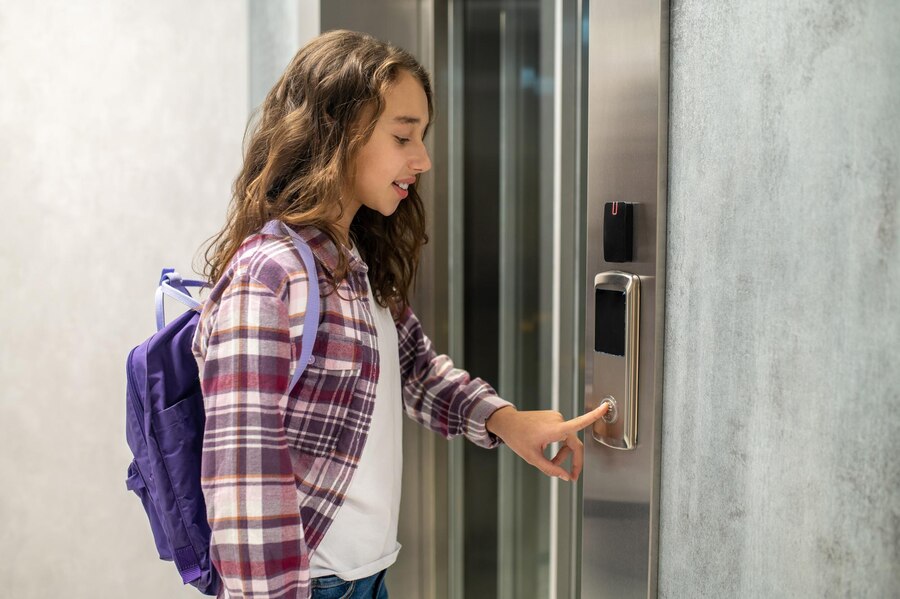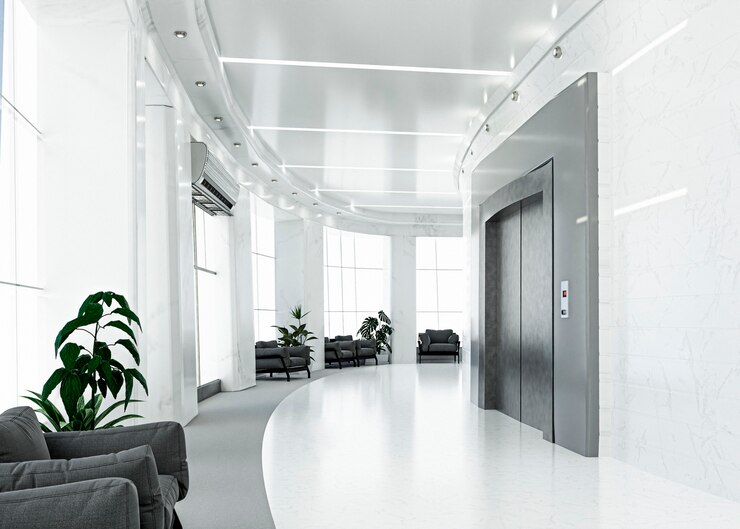
With technology in its top state, modern-day buildings require high-grade security domestic lifts. The advanced features used in these elevators ensure the people’s safety and the lift’s longevity. This blog post intends to explain the safety features of an elevator. It will also answer why these features should be your top priority when looking for an elevator.
Why Elevator Safety Should Be Your Priority?
Accidents involving elevators are rare. Elevators become a big problem for users if they are not well taken care of or misused. An elevator safety commitment includes a course of checks and maintenance by certified experts, as this helps them spot and solve any possible problems quickly before they get worse. This preventive method provides for the comfort of passengers and heightens the capacity of an elevator, which saves both time and money in the future.
Essential Safety Features of An Elevator
Elevators are an integral part of modern life as they help us to travel swiftly to various floors. Residential home elevators are simple equipment, but a complex system makes the journey smooth and secure. Electrical and mechanical systems comprise the bulk of the passenger safety systems features, carrying out their tasks in an orderly and coordinated manner.
Electrical Safety Features
The electrical parts of an elevator are the most critical components that keep the elevator safe when it is in operation. These include:

-
Elevator Controller
The controller operates as the brain of the elevator. The computer system receives signals from buttons, sensors, and safety devices. It processes this information to determine the elevator’s movement, speed, and direction. The controller ensures a smooth operation and coordinates all other electrical components for a safe ride.
-
Overload Sensors
These sensors continuously measure the weight inside the elevator cabin. If the weight exceeds the designated capacity, the elevator will not move and will display a warning message. This prevents overloading, damaging the elevator, and posing a safety risk.
-
Fire Service Mode
In case of a fire, elevators must be removed from regular operation and made accessible for firefighters. Fire service mode allows firefighters to use a unique key to control the elevator and reach different floors efficiently. This mode also turns off automatic door opening and prioritizes firefighter control for safe evacuation.
-
Software Systems
Modern elevators rely on sophisticated software to manage various functions. This software monitors the elevator’s operation, analyzes sensor data, and triggers safety mechanisms when necessary. Regular software updates ensure these systems operate efficiently and address potential vulnerabilities.
-
Photocell Sensors
These sensors are located near the elevator doors, creating an invisible light curtain across the doorway. If a person or object breaks the light beam while the doors close, the sensors trigger an automatic door reversal to prevent injuries.
Mechanical Safety Features
The mechanical components of an elevator provide the physical foundation for safe movement. These robust systems are designed to withstand heavy loads and ensure a controlled and smooth ride.
-
Anti-Trap System
This system prevents passengers from getting trapped between the elevator and landing doors. It utilizes pressure sensors or mechanical rollers to find an obstruction and automatically opens the door again if something is blocking it.
-
Overspeed Governor
The safety system serves as an ultimate protection if the elevator goes too fast for its limit. It is a speed limiter connected to the lift by a steel rope. If the lift is speeding too much, the governor works by slamming on brake shoes, which stops the elevator.
-
Intelligent Doors
The modern elevator doors have sensors and motors that ensure the operation is swift and safe. They open and close at controlled speeds and have features like automatic reversal if they encounter an obstruction.
-
Dual Safety Brakes
These brakes are vital in stopping and holding the elevator in position when it’s stationary. They function individually to make the lift stay put despite one of the brakes failing.
-
Door Lock Safety Switches
These switches ensure the elevator does not move if all doors are closed and locked by mistake. It offers better safety by preventing the lift cabin from changing its position when a person is entering or exiting.

Advancements in Elevator Safety
These advancements come with a cost, and the elevator lift price in India can vary depending on several factors, such as the building’s height, capacity requirements, and the chosen features. Real-time sensor-integrated technology is among the most significant developments. Those sensors control the elevator’s functioning and detect the speed, vibration, and door alignment status.
The next wave of the evolution of elevator safety is the Internet of Things (IoT). Connecting elevator systems to a central network will allow them to be monitored and scheduled for proactive maintenance. Building supervisors can monitor the state of the elevator system in real time, pinpointing probable flaws at their early stages and blocking their progression into significant blow-ups. Implementing this preventive maintenance makes it easy to work out the root cause of the problem, and the breakdowns are minimized to zero. This also results in elevators being fully functional and secure.
Choose SWIFT for a High-Quality Domestic Lifts!
Are you seeking a high-quality domestic lift that guarantees extreme safety? SWIFT is a leading brand for premium domestic lifts. Our lifts are made with a screw and nut-drive system to ensure the utmost safety. It follows Europe’s strictest regulations, such as the European Machinery Directive 2006/42/EC and the European Standard EN81-41.
Our lift models have in-built advanced security features such as anti-trap systems, intelligent doors, and dual safety brakes. The Tesla-inspired battery solution integration in the lift’s design ensures peace of mind for emergencies. These lifts are remotely accessible and monitored by our service team.
Choose SWIFT for a high-quality domestic lift that delivers safety, comfort, and reliability without compromising your budget. Contact us today to schedule a consultation and discover how we can transform how you move into your home.
FAQs
The safety device on an elevator includes various features such as overload sensors, fire service mode, intelligent doors, and dual safety brakes. These mechanisms work together to ensure the safety of passengers during operation.
Elevator safety brakes monitor the elevator’s speed, typically as an overspeed governor. If an excessive speed is detected, the safety brake engages, bringing the elevator to a controlled stop and preventing a potential free fall.
The overspeed governor, a crucial safety feature, is designed to prevent elevators from falling. It monitors the elevator’s speed and activates the brakes in the event of an acceleration beyond the safe limit, ensuring a secure descent.
Yes, elevators are equipped with fire alarms. They feature a fire service mode that allows emergency personnel to control the elevator during a fire, facilitating swift and safe evacuation and enabling firefighters to move within the building efficiently.
Some elevators have CCTV (Closed-Circuit Television) cameras for security and surveillance. CCTV in elevators enhances safety and may deter potential misconduct or unauthorized activities.

